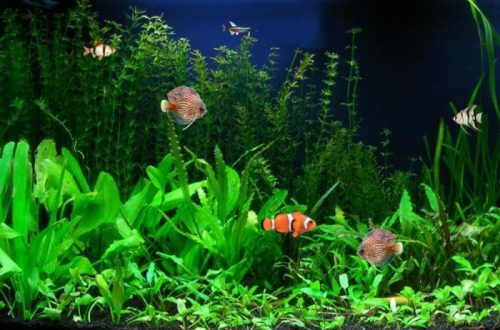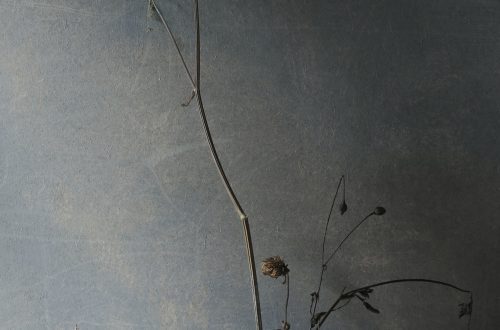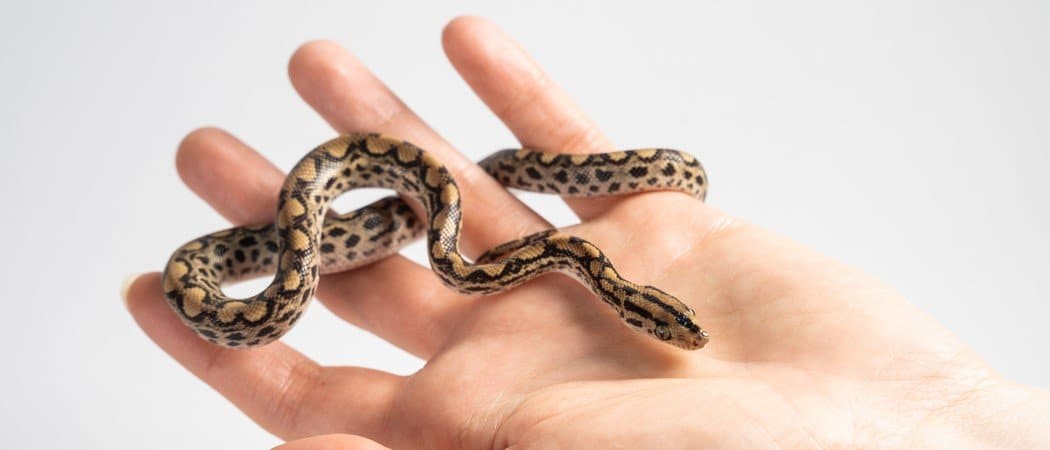
Top 10 smallest snakes in the world
You can find snakes almost everywhere. Most often they live on the ground, but some species prefer trees, hide underground, in rivers and lakes. When it’s cold outside, they fall asleep.
Snakes are predators. Poisonous snakes attack prey and bite it, injecting poison. Other species suffocate her by squeezing the rings of their bodies. Most often they swallow the caught animal whole. Most of them reproduce by laying eggs, but there are also live-bearing ones.
The size most often does not exceed 1 m. But there are both very large individuals, such as the reticulated python, and very small ones, growing up to 10 cm. Many of them are most often safe for humans, they feed on insects or their larvae. They are easily confused with worms.
We bring to your attention a list of the 10 smallest snakes in the world: a photo with the names of the planet’s record holders, some of which are poisonous.
Contents
10 Copperhead common, 70 cm
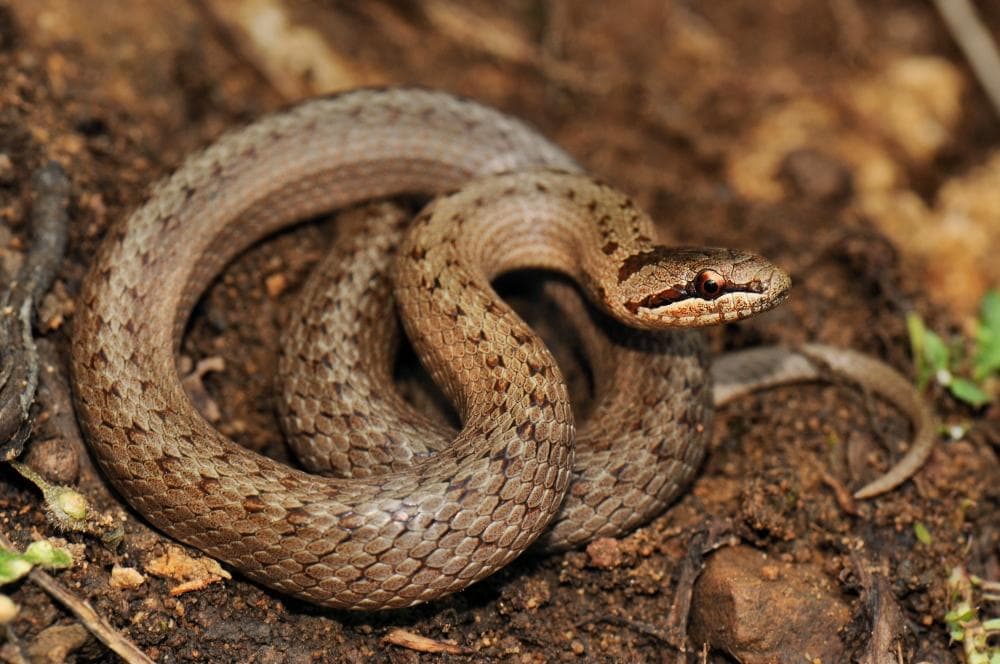 The body length of this snake is about 60-70 cm, males are smaller than females. Copperhead common lives in Europe. Chooses glades, sunny edges, meadows for life, avoiding places with high dampness. But if necessary, these snakes are good swimmers.
The body length of this snake is about 60-70 cm, males are smaller than females. Copperhead common lives in Europe. Chooses glades, sunny edges, meadows for life, avoiding places with high dampness. But if necessary, these snakes are good swimmers.
The peak of activity for this snake is the period of morning and evening, it prefers to appear during the day, but occasionally leaves its hiding place in the dark. It hides in rodent burrows, in voids that form under stones and rock crevices.
Copperhead hunts lizards, sometimes eats mice, chicks and various small vertebrates. The prey is first squeezed by the rings of its body. It shows activity for about six months, already in September or October it goes into hibernation. The snake becomes sexually mature at 3-5 years old, when its length reaches 38-48 cm. It lives for about 12 years.
9. Humble Eirenis, 60 cm
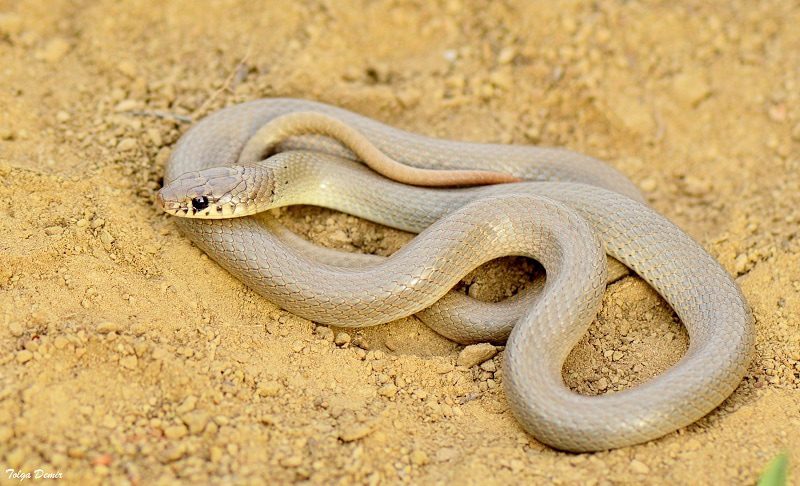 Belongs to the already-shaped family. Adults do not grow more than 60 cm. They are beige, brown or gray in color. The heads are usually dark, with a spot resembling an “M” behind the eyes, but this head color changes over time.
Belongs to the already-shaped family. Adults do not grow more than 60 cm. They are beige, brown or gray in color. The heads are usually dark, with a spot resembling an “M” behind the eyes, but this head color changes over time.
humble eirenis lives on many islands in the Mediterranean as well as the Aegean Sea, it can be found in open areas in the steppe or rocky slopes, where there are many plants. During the day, he camouflages himself in their thickets, and in the evening he crawls out of his hiding place. Feeds on insects. It spends the winter in hibernation, from November to April it will not be possible to see it.
8. Japanese snake, 50 cm
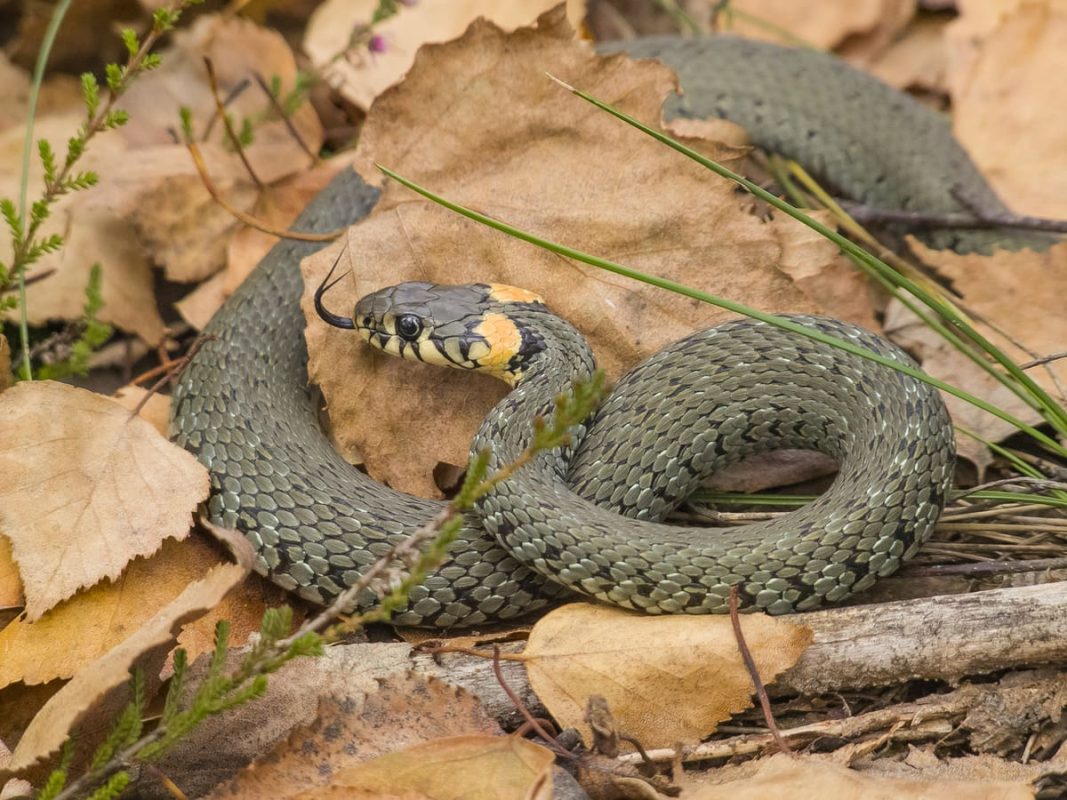 Lives in China, Japan, Korea, Russia. Chooses for life deciduous or mixed forests, thickets of shrubs, such as raspberries, wild roses.
Lives in China, Japan, Korea, Russia. Chooses for life deciduous or mixed forests, thickets of shrubs, such as raspberries, wild roses.
It is not so easy to see her, because. Japanese already – a secretive snake, most of the time hiding underground, hiding under stones, trees, stumps. It is tiny, up to 50 cm, brown, sometimes lighter, brown, the belly is greenish.
Eats shellfish, earthworms and small frogs. Young snakes – from 11,5 cm in size, they are considered adults, growing up to 32-36 cm.
7. Striped wolftooth, 45 cm
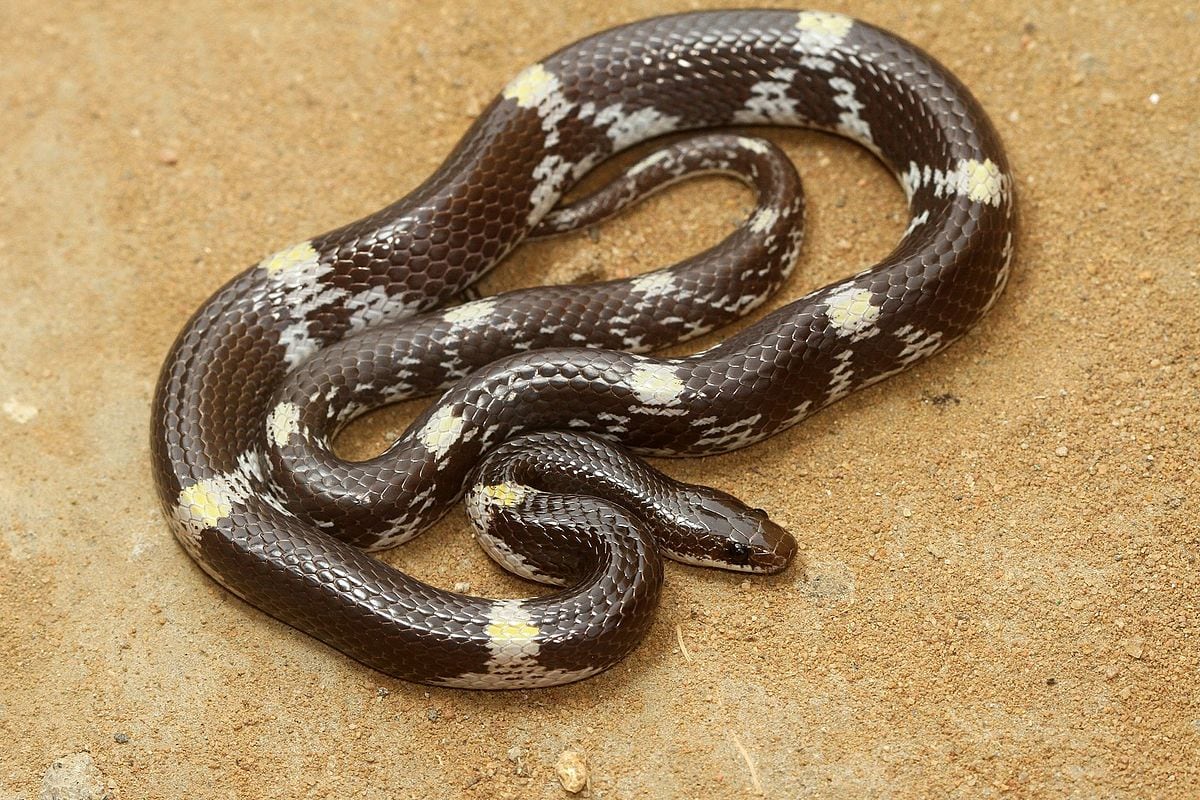 It grows no more than 45 cm. striated wolftooth black or brown. You can meet this snake in Uzbekistan, Tajikistan, Turkmenistan, India, Sri Lanka, etc.
It grows no more than 45 cm. striated wolftooth black or brown. You can meet this snake in Uzbekistan, Tajikistan, Turkmenistan, India, Sri Lanka, etc.
Chooses mountains or foothills with semi-desert vegetation for life. Appears from hiding at night or at dusk, during the day it prefers to hide in rodent burrows, under stones, in cracks. Eats small lizards.
6. Arizona snake, 40 cm
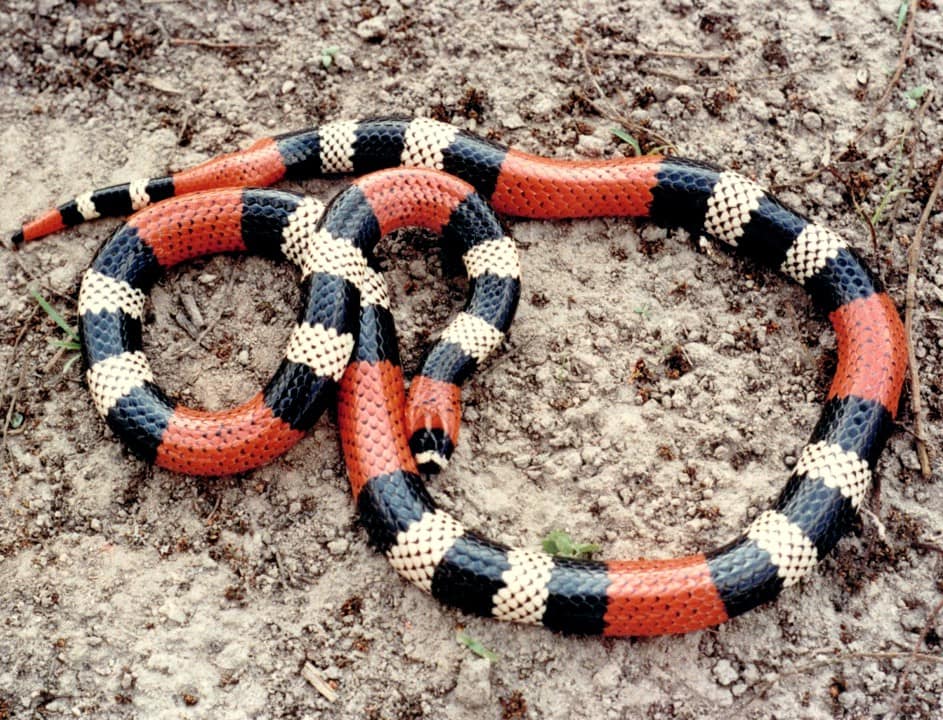 Belongs to the family asps. It has an incredibly thin body with a small head. The body is all in stripes of red, yellow and black. Lives in the deserts of the southwestern United States and Mexico.
Belongs to the family asps. It has an incredibly thin body with a small head. The body is all in stripes of red, yellow and black. Lives in the deserts of the southwestern United States and Mexico.
Feeds on insects, lizards, small amphibians. If the snake sees that it is in danger, it begins to draw air into the lungs and exhale it rhythmically. This produces a series of popping sounds.
5. Common blind snake, 38 cm
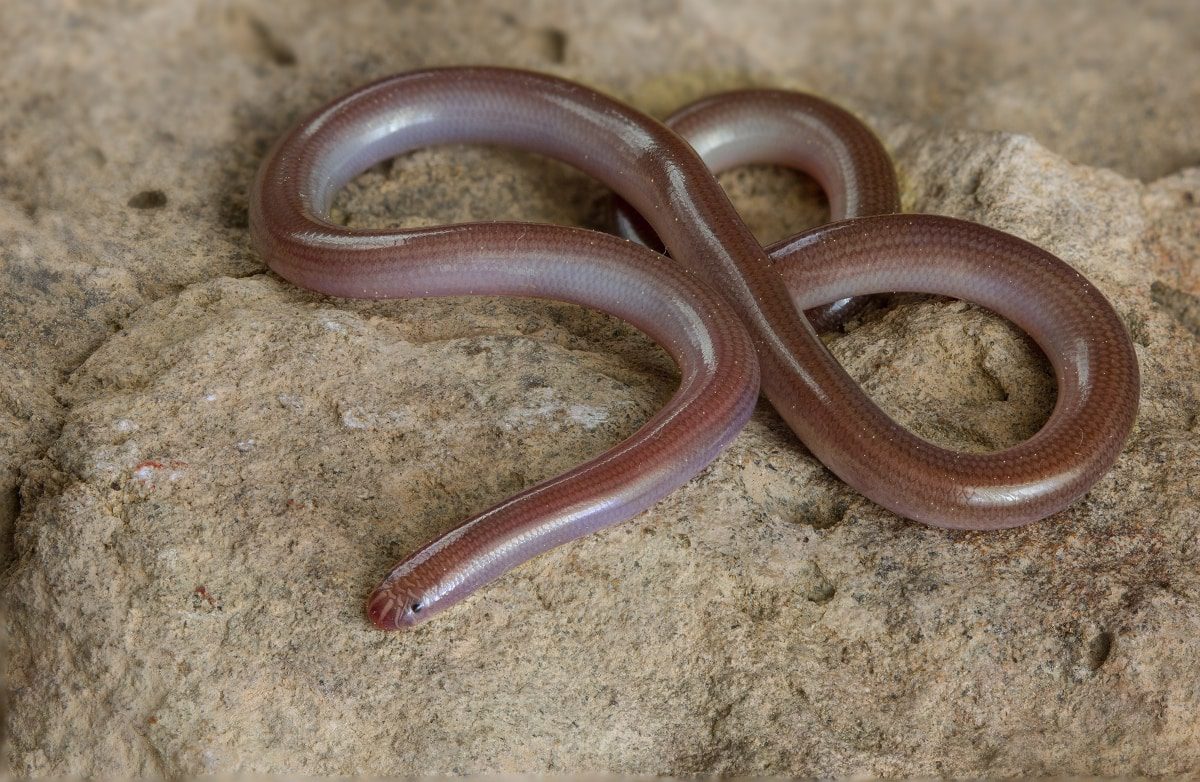 She is called differently worm-like blind snake. This is a small snake, the length of which, together with the tail, does not exceed 38 cm. It is very similar to an earthworm, with an incredibly short tail. Color – brownish or slightly red.
She is called differently worm-like blind snake. This is a small snake, the length of which, together with the tail, does not exceed 38 cm. It is very similar to an earthworm, with an incredibly short tail. Color – brownish or slightly red.
Common blind snake sheds right into the soil. It is found in Dagestan, Asia Minor, Syria, the Balkan Peninsula, etc. It chooses for itself dry and gentle slopes, thickets of bushes. Its minks are narrow, resembling the passages of worms, and can occupy nests of ants.
Trying to hide under rocks. If you move them away, the snake quickly goes into the ground. In the spring it wakes up from hibernation in March-April, on the driest and hottest summer days it hides in the ground.
4. Kalamaria Linnaeus, 33 cm
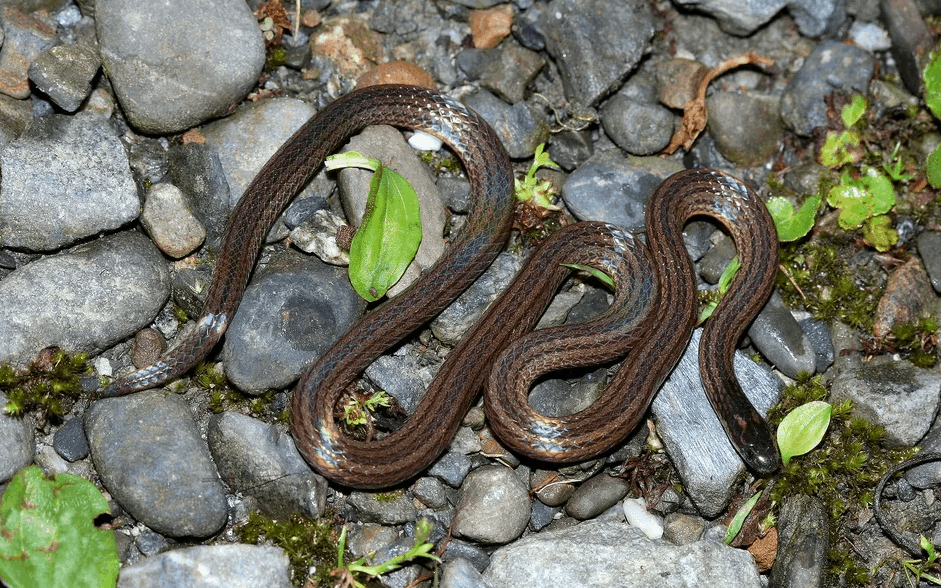 Nonpoisonous. It was named after the Swedish naturalist Carl von Linnaeus. Length Calamarii Linnaeus does not exceed 33 cm. She constantly hides. Finding her is not easy. Eats worms and insects.
Nonpoisonous. It was named after the Swedish naturalist Carl von Linnaeus. Length Calamarii Linnaeus does not exceed 33 cm. She constantly hides. Finding her is not easy. Eats worms and insects.
This type of snake has a lot of enemies. To hide from them, she developed a special method of protection: the end of the tail is the same color as the head. She exposes her tail to the attacker, and at this time she crawls away from danger. The tail is not as big a loss as the head, it helps it survive.
3. Pygmy African viper, 25 cm
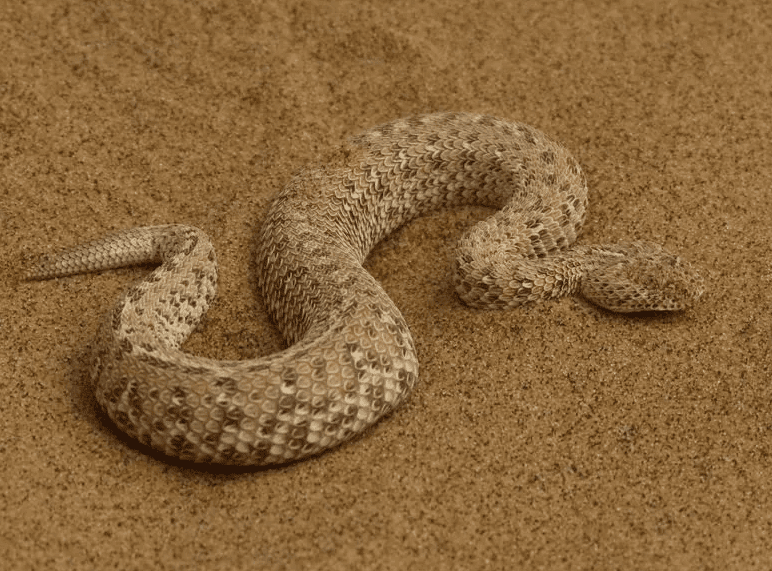 Assigned to the genus of African vipers, poisonous. It is small in size: from 20 to 25 cm, the maximum length is 32 cm. The longest and heaviest are females. They are distinguished by a thick body of gray or reddish-yellow color with small dark spots.
Assigned to the genus of African vipers, poisonous. It is small in size: from 20 to 25 cm, the maximum length is 32 cm. The longest and heaviest are females. They are distinguished by a thick body of gray or reddish-yellow color with small dark spots.
African pygmy viper lives in the sandy deserts of Angola and Nambia; in the Namib Desert and the regions adjacent to it. If he sees an approaching danger, he hides in the sand. During the day it lies in the shade of bushes, buried in the sand. It is active at dusk and at night.
Eats small lizards, geckos, invertebrates. If it bites a person, pain and swelling will appear, but its poison cannot be called deadly, because. she injects it in small doses. Lizards die from it only 10-20 minutes after the bite.
2. Brahmin blind, 15 cm
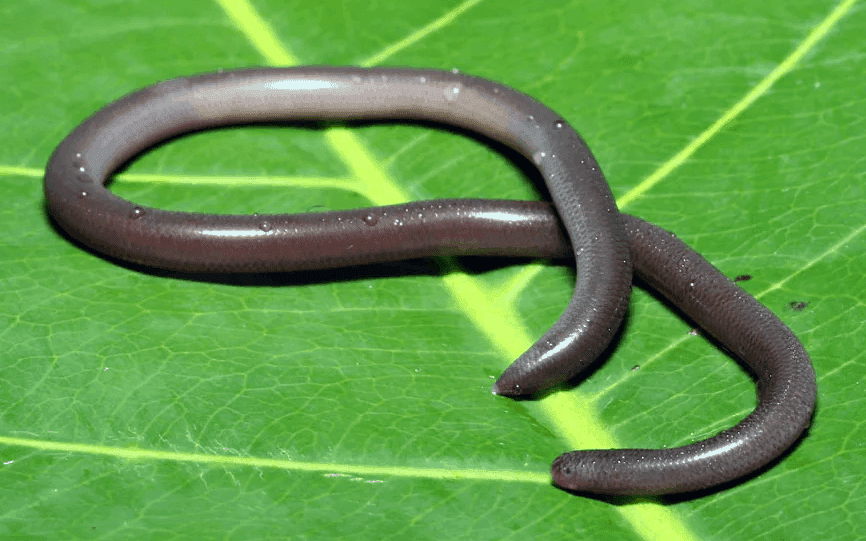 A small snake, 10 to 15 cm long, is painted in brown-black colors. When you look at it, it seems that a small trickle of oil is flowing. Sometimes it is gray or reddish brown.
A small snake, 10 to 15 cm long, is painted in brown-black colors. When you look at it, it seems that a small trickle of oil is flowing. Sometimes it is gray or reddish brown.
Brahmin blind called and pot snake, because she can live in flower pots. In nature, it is found on the islands of the Indian and Pacific Oceans, in southern Asia. It settled over a large area thanks to people who transported it along with potted plants.
He lives in the ground or hides under stones, eats insects and worms. They are called blind people for a reason, but because due to the existence underground, the vision of these snakes has atrophied and they can only distinguish where it is light and where it is dark.
1. Barbados narrow-mouthed snake, 10 cm
 Lives only on the island of Barbados. In 2008 Barbados narrow-mouthed found by US biologist Blair Hedge. Lifting one stone, he found several snakes, the largest of which was 10 cm 4 mm.
Lives only on the island of Barbados. In 2008 Barbados narrow-mouthed found by US biologist Blair Hedge. Lifting one stone, he found several snakes, the largest of which was 10 cm 4 mm.
In appearance, snakes are like earthworms. For most of their lives, they hide under stones or in holes in the ground that they themselves create. Feeds on ants, termites and their larvae. She secretes a special secret that helps her to penetrate their nests and eat the larvae.
The newborn snake is even smaller than the mother; about 5 cm. Often, only 1 cub appears in one individual. They are called narrow-short because they have a special structure of the mouth: there are no teeth at all in the upper jaw, they are all on the lower one.



